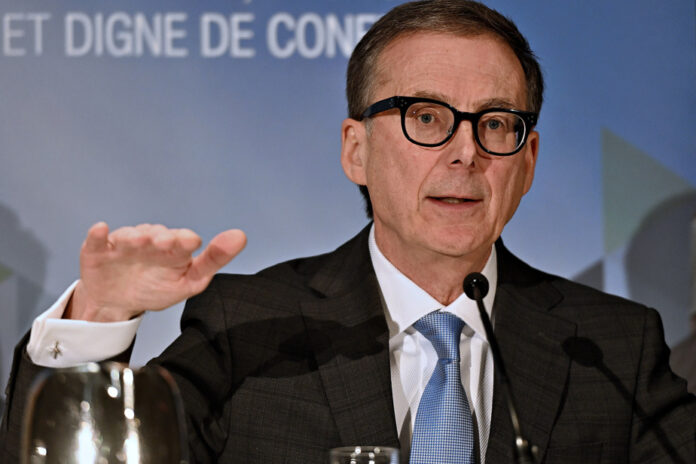(Ottawa) The Bank of Canada is expected to hold its key interest rate this week as inflation continues to slow, despite other data suggesting the economy is still buoyant.
The central bank is expected to announce its next decision on the target for the overnight rate on Wednesday. The announcement will be accompanied by updated economic projections on growth and inflation in the Quarterly Monetary Policy Report.
Bank of Montreal Chief Economist Douglas Porter points out that although the economy is growing faster than expected, lower than expected inflation will convince the Bank of Canada to keep its key rate at 4.5%.
“When we combine all of these things together, it certainly looks like the [central] bank is likely to hold rates steady for now,” Porter said.
For months, the economic data on which the Bank of Canada relies for its policy rate decisions has been sending mixed signals about the state of the economy.
After contracting slightly in December, real gross domestic product rose 0.5% in January. Statistics Canada’s preliminary estimate suggests it rose again by 0.3% in February.
CIBC’s chief economics officer, Karyne Charbonneau, says a closer look at the economic growth numbers, however, shows there may not be too much cause for concern.
“Part of the strength we’re seeing in GDP seems to be the unwinding of some supply disruptions, which is actually good for inflation,” says Charbonneau.
Meanwhile, companies continue to hire. In March, some 35,000 jobs were added in Canada, bringing the total number of jobs gained over the past six months to almost 350,000.
The unemployment rate also held steady at 5% for the fourth consecutive month. That’s just above the all-time low of 4.9% hit this summer.
While this continued strength in the economy is not necessarily what the Bank of Canada wants, lower inflation is good news.
In February, Canada’s annual inflation rate fell to 5.2%, marking the second month in a row that inflation was below forecast. The slowdown in headline inflation comes as supply chains recover and commodity prices moderate.
Monthly inflation data shows that inflation is actually moving much closer to the Bank of Canada’s 2% inflation target.
As long as inflation continues to decline as expected, the Bank of Canada does not plan to raise its policy rate any further, which influences many interest rates. A conditional pause on rate hikes was decreed earlier this year, while keeping the door open for further increases if needed.
The Bank of Canada seems cautiously optimistic that its aggressive rate hikes between March 2022 and January 2023—which saw its key rate rise from near zero to its highest level since 2007—will be powerful enough to stifle inflation.
The effect of the hike in the policy rate, which can take up to two years to be fully felt in the economy, is expected to continue to spread through the economy and hamper growth.
Recent polls by the Bank of Canada also show that consumers and businesses are bracing for a downturn. Consumers have reported that they plan to cut back on trips and dining out to save money. Meanwhile, companies expect their sales to slow.
And while labor shortages are still a major concern for businesses, the survey found signs of slowing labor market and wage growth.
“The survey results actually show that policy rate hikes are working,” says Ms. Charbonneau. I think this is all encouraging. »















